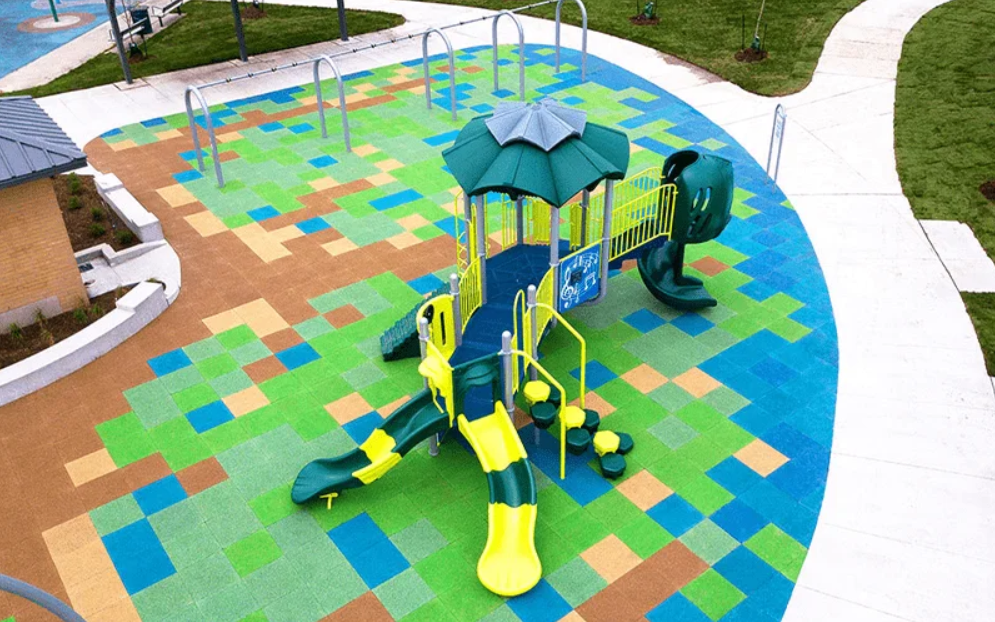Playgrounds are wonderful places where children can have fun and develop their imagination while enjoying outdoor activities; however, they can also be potentially risky spaces if hazards are not adequately addressed. These aspects are considered from the moment of playground design, as aspects from the flooring to the materials selected must be considered. In this article, we will discuss the importance of risk assessment in playgrounds and how the installation of rubber surfacing can significantly reduce the incidence of accidents.
What is playground risk assessment?
Risk assessment is a crucial process in designing and maintaining a safe playground, which involves identifying and assessing the potential hazards and risks children may face while playing. This includes everything from sharp objects or sharp edges to the risk of falling from different heights. A proper risk assessment ensures the necessary measures are taken to reduce hazards and promote children’s safety.
Risk assessment in playgrounds is essential to create a safe and hazard-free environment for children. One of the points to review is the floors and surfaces that will be part of the area intended for children’s recreation, as they must be adequate to prevent trips, falls, and scratches and minimize any possible injury that may be caused at the time of play.
The importance of rubber surfaces in playgrounds
Rubber surfaces have become increasingly popular on playgrounds due to their ability to reduce impact and absorb shock in the event of a fall. Unlike hard surfaces, such as asphalt or concrete, using rubber on playgrounds provides additional protection for children as it acts as a kind of shock absorber and helps reduce the impact in the event of a fall; this prevents serious injuries, such as fractures or contusions. In addition, rubber surfaces offer a better grip, preventing slips and trips while children run and play. Choosing a suitable rubber surface minimizes the risk of injury and creates a safer environment for children.
Rubber surfaces are a great addition to playgrounds as they significantly reduce the incidence of accidents by providing adequate cushioning and grip. By opting for rubber surfaces, we are investing in the safety of children and users by creating safer and more enjoyable play spaces.
Types of rubber playground surfaces
Different rubber surfaces, such as recycled rubber, tiles, and PIP, can be used in play areas. Each type has its characteristics and benefits, and it is important to consider the specific use and location before deciding. Consulting with an expert can help us choose the best option to maximize safety and durability.
Benefits of rubber surfaces
One of the most prominent benefits of rubber surfaces is their ability to absorb impact. These surfaces are designed to provide extra protection if a child falls or slips during play. The resilient rubber acts like a cushion, reducing the impact on joints and bones and preventing more severe injuries, such as fractures or contusions. They also offer a non-slip surface that helps prevent unnecessary falls. The rubber texture provides a better grip, preventing children from slipping on wet or slippery surfaces. This is especially beneficial in areas with water play or on rainy days, as they provide a safe and stable base for children to play confidently.
Another positive aspect of rubber surfaces is their durability. They are designed to withstand wear and tear and constant use, ensuring they can withstand children’s play demands. They are also easy to clean and maintain, making playgrounds more hygienic and comfortable for children.
What did you think of this topic? Do you want to know more about rubber surfaces?
If you want a rubber surface for your project, community, daycare, school, or public park, contact us by visiting the following link.
